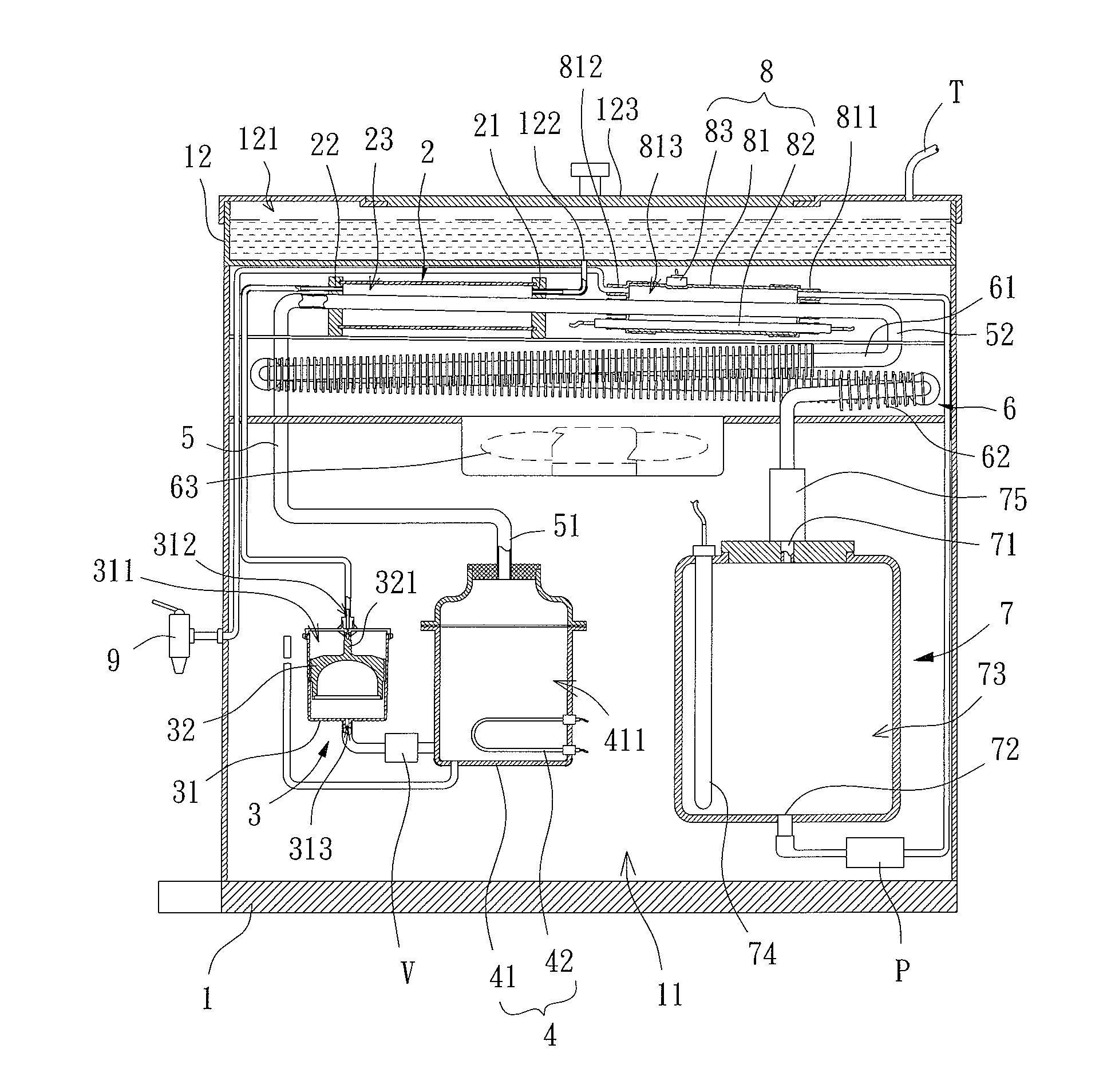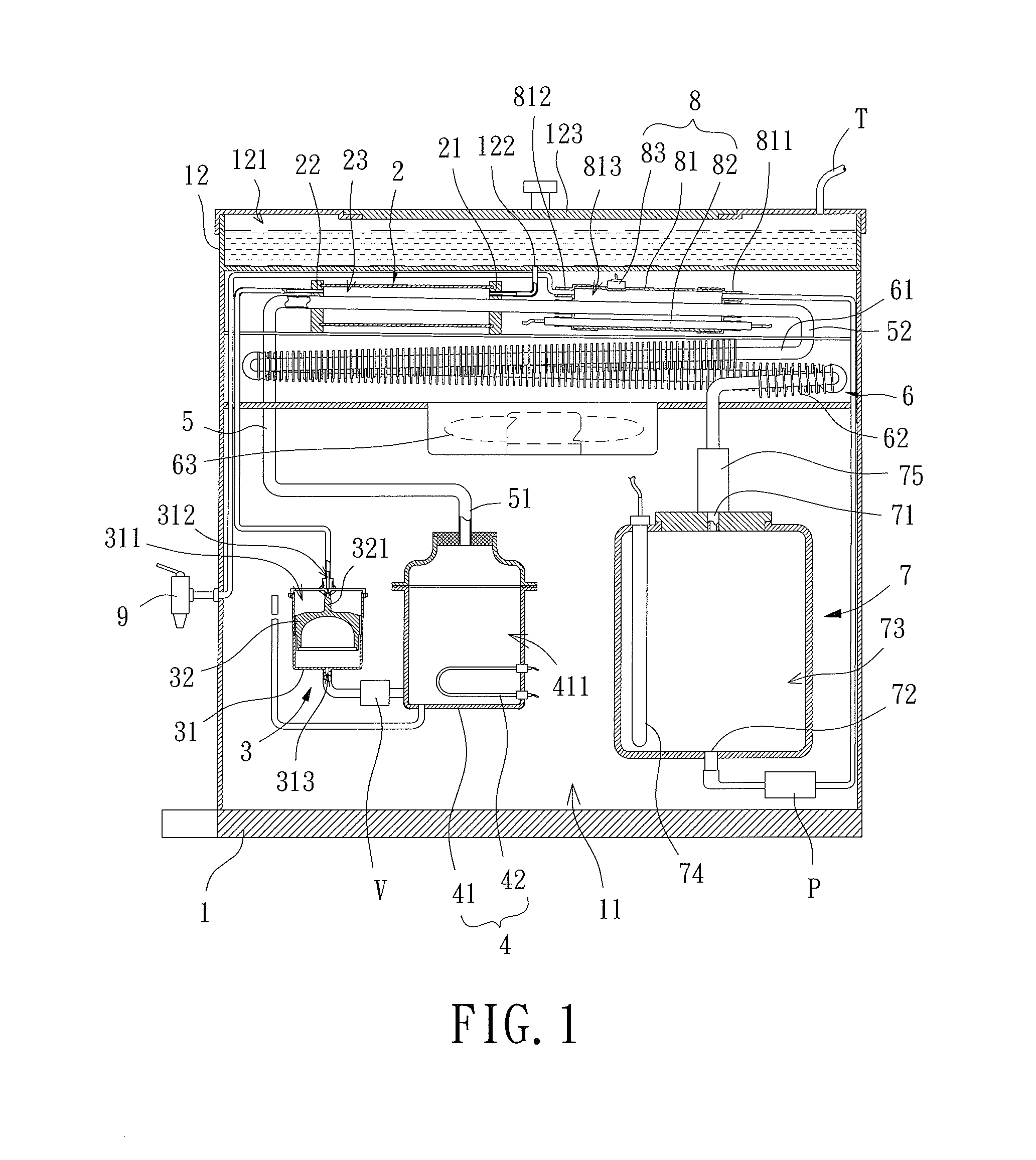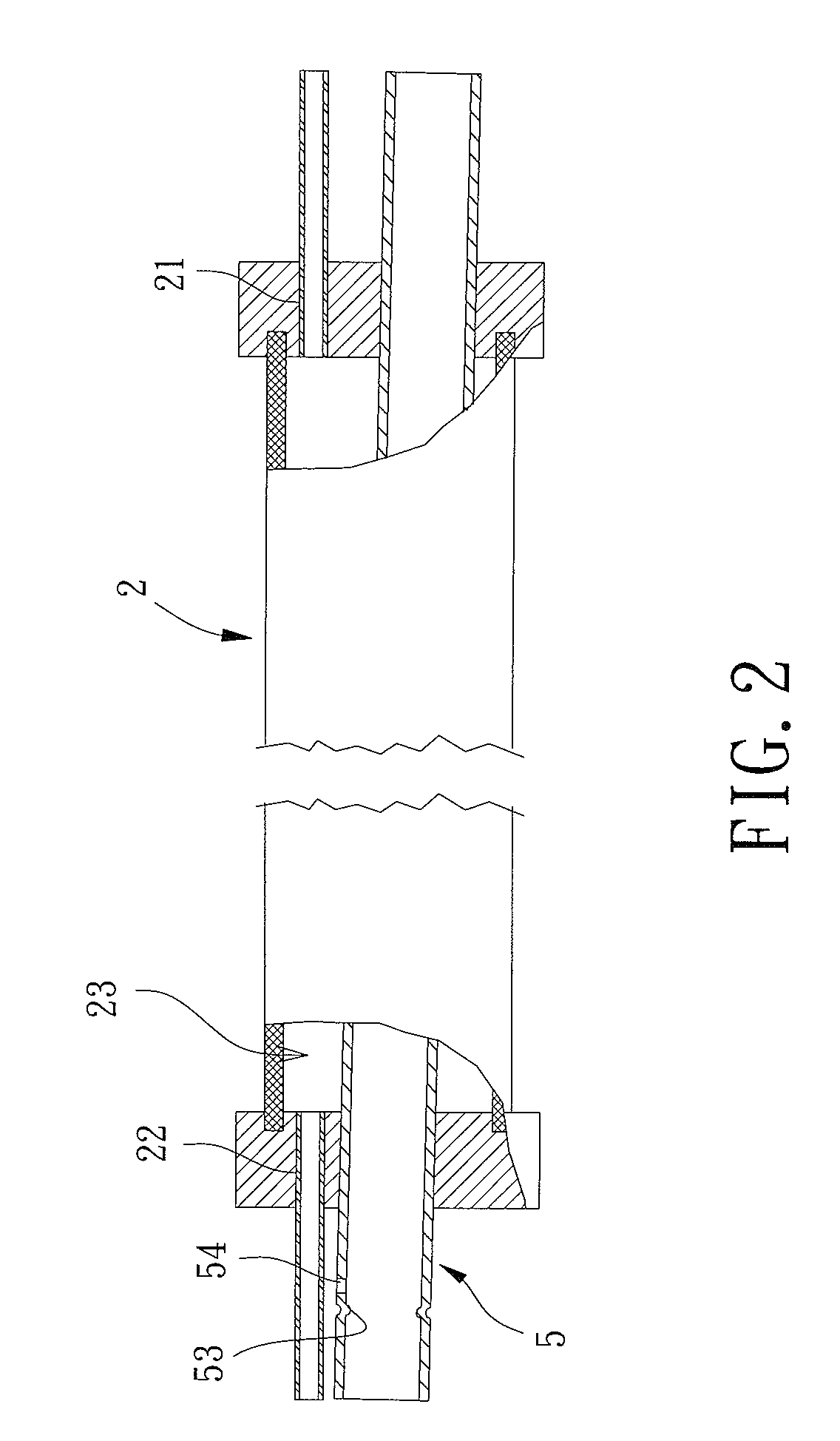Distillation-Type Drinking Fountain and Energy-Saving Heating Unit Thereof
- Summary
- Abstract
- Description
- Claims
- Application Information
AI Technical Summary
Benefits of technology
Problems solved by technology
Method used
Image
Examples
Embodiment Construction
[0019]Referring to FIG. 1, a distillation-type drinking fountain comprising a housing 1, a heat-exchanging tube 2, a liquid level control unit 3, a hot water tank 4, a steam pipe 5, a condensing unit 6, a water-collecting container 7, an energy-saving heating unit 8 and an outlet valve 9 is disclosed according to a preferred embodiment of the invention. The heat-exchanging tube 2, liquid level control unit 3, hot water tank 4, steam pipe 5, condensing unit 6, water-collecting container 7, energy-saving heating unit 8 and outlet valve 9 are received in the housing 1 and communicate with each other via pipes. The outlet valve 9 is disposed outside the housing 1 and communicates with the energy-saving heating unit 8 via a pipe.
[0020]The housing 1 comprises a compartment 11 for receiving the heat-exchanging tube 2, liquid level control unit 3, hot water tank 4, steam pipe 5, condensing unit 6, water-collecting container 7 and energy-saving heating unit 8. The housing 1 further comprises...
PUM
| Property | Measurement | Unit |
|---|---|---|
| Temperature | aaaaa | aaaaa |
| Density | aaaaa | aaaaa |
| Distance | aaaaa | aaaaa |
Abstract
Description
Claims
Application Information
 Login to View More
Login to View More - R&D
- Intellectual Property
- Life Sciences
- Materials
- Tech Scout
- Unparalleled Data Quality
- Higher Quality Content
- 60% Fewer Hallucinations
Browse by: Latest US Patents, China's latest patents, Technical Efficacy Thesaurus, Application Domain, Technology Topic, Popular Technical Reports.
© 2025 PatSnap. All rights reserved.Legal|Privacy policy|Modern Slavery Act Transparency Statement|Sitemap|About US| Contact US: help@patsnap.com



